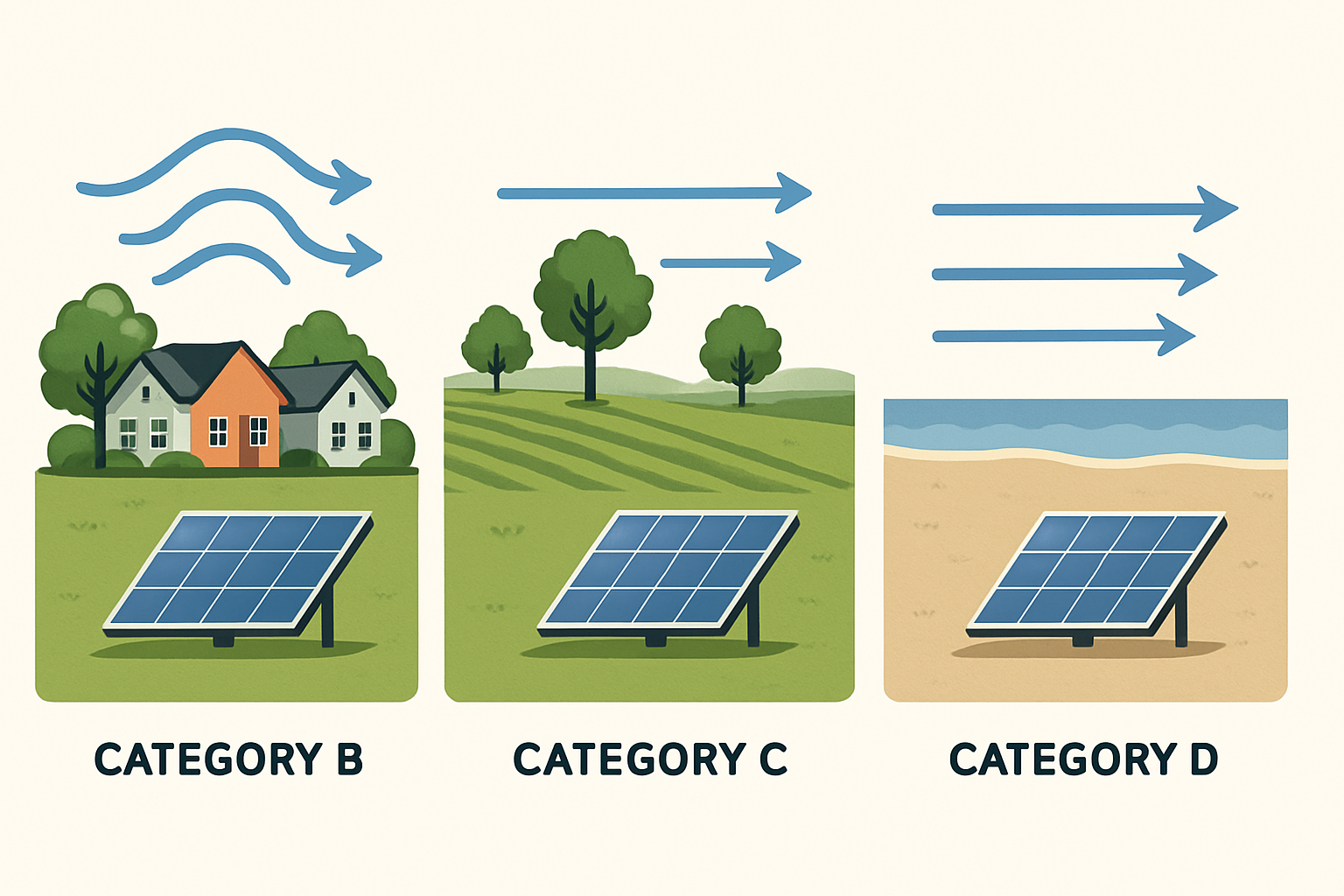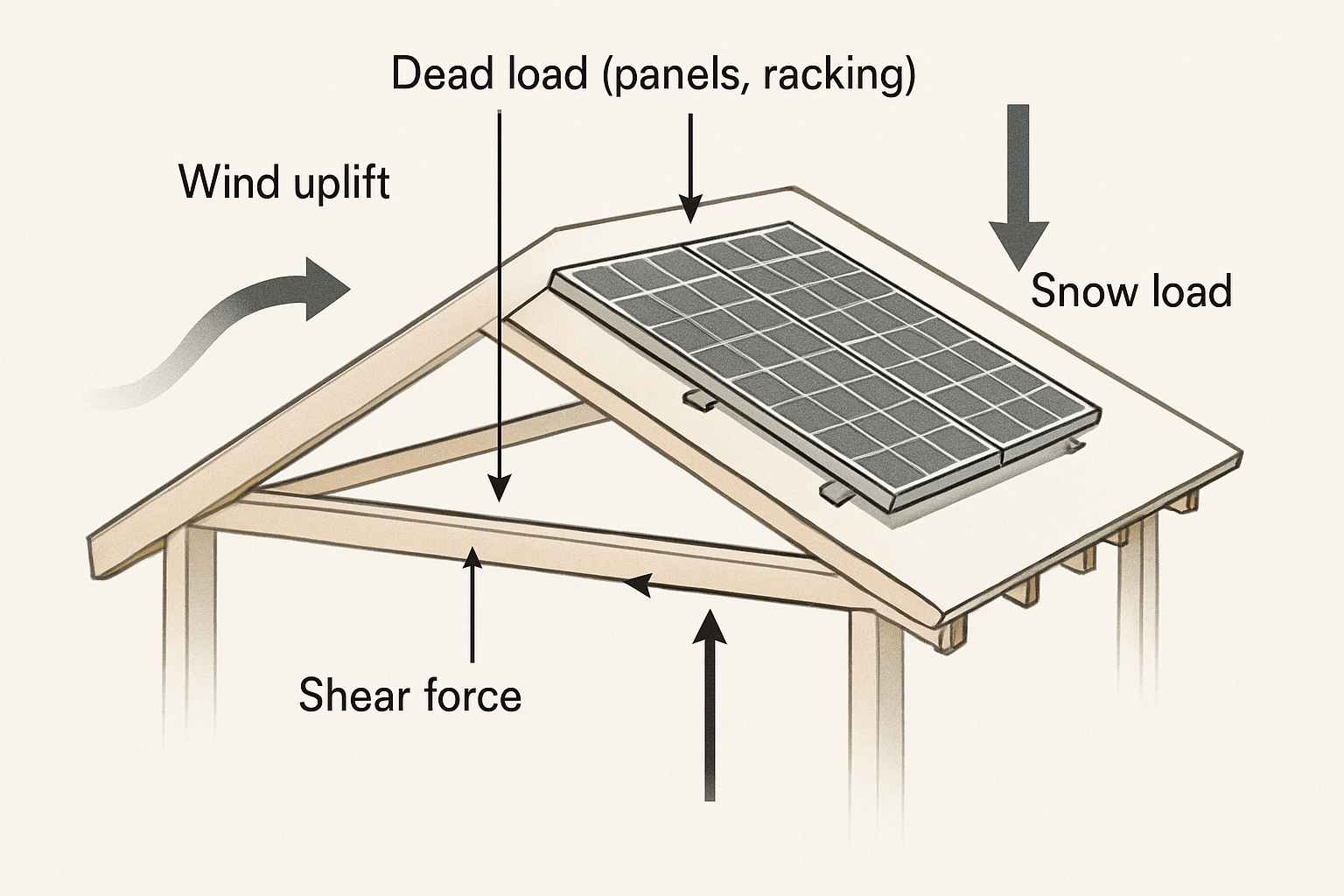Ballasted solar arrays are a popular choice for large, flat commercial roofs, primarily because they avoid roof penetrations. Their stability relies on a delicate balance of weight and engineering to counteract wind and snow loads. The American Society of Civil Engineers (ASCE) 7 standard provides the foundational requirements for these calculations. With the release of ASCE 7-22, the engineering landscape has shifted, prompting a necessary re-evaluation of existing installations.
The Catalyst for Change: Key Updates in ASCE 7-22
The transition from previous versions like ASCE 7-16 to ASCE 7-22 is not just a minor update; it introduces significant changes that directly impact solar array design. Understanding these changes is the first step in any re-rating process. The updates reflect more sophisticated data and modeling, aiming for more uniform structural reliability across the country.
Revised Wind and Snow Load Maps
ASCE 7-22 introduces more granular and updated wind speed maps, particularly for hurricane-prone regions. While some areas may see a slight decrease in design wind speeds, many locations now have more accurate, and sometimes higher, values. Similarly, the ground snow load maps have been significantly refined based on 40 years of additional data, leading to an average increase in roof snow load values for many sites. This means an array considered safe under the old standard might face substantially different environmental load calculations today.
New Methodologies for Load Calculation
The standard has evolved beyond just new maps. For wind, the way the directionality factor (Kd) is applied has been modified, affecting nearly every wind calculation. For snow, the standard moves away from a uniform hazard model to one that targets uniform reliability, changing the load factors used in design equations. According to a guide on the ASCE 7-22 snow load provisions, these changes were driven by a need to create more consistent safety margins across different geographical locations.
A Critical Change for Ballasted System Integrity
Perhaps one of the most direct impacts on ballasted systems is a new provision stating that solar panels cannot be considered part of the structural load path between isolated mounting points unless they have been specifically tested for such loads. Many existing ballasted systems rely on the module frame to provide this connection, meaning their fundamental design may not comply with the new standard without re-evaluation.
A Practical Re-rating Case Study
Consider a 10-year-old, 500 kW ballasted solar array on a commercial warehouse in a region that has seen updates to its wind and snow load requirements under ASCE 7-22. The building owner plans a system upgrade, triggering a structural review.
Step 1: Data Collection and Initial Analysis
The first step is to gather all original documentation: structural drawings of the building, the original solar array design plans based on ASCE 7-10 or 7-16, and any geotechnical reports. The engineer then uses the ASCE 7 Hazard Tool to determine the new site-specific wind speeds and ground snow loads as per ASCE 7-22.
Step 2: Applying New Wind Load Calculations
Using the updated wind maps and pressure coefficients from ASCE 7-22, the engineer recalculates the uplift and shear forces on the array. The tilt angle of the panels plays a significant role; a 30° tilt can experience up to 2.5 times the uplift force of a 10° tilt under the same wind conditions. The new calculations will likely show increased uplift pressures, especially in the roof's corner and perimeter zones, which are more susceptible to high suction forces.
| Roof Zone | Uplift Pressure (ASCE 7-16) | Uplift Pressure (ASCE 7-22) | Percentage Increase |
|---|---|---|---|
| Interior (Zone 1) | -25 psf | -28 psf | 12% |
| Perimeter (Zone 2) | -38 psf | -45 psf | 18% |
| Corner (Zone 3) | -55 psf | -68 psf | 24% |
Step 3: Re-evaluating Ballast Requirements
The increased uplift forces directly translate into a need for more ballast to keep the array secure. The engineer calculates the new required weight for each ballast block. The critical question then becomes: can the existing roof structure support this additional dead load? A new structural analysis of the roof is non-negotiable. If the roof's capacity is exceeded, simply adding more weight is not a viable solution.
Addressing Non-Compliance: Solutions Beyond Adding Weight
If the re-rating reveals the roof cannot handle the required additional ballast, several engineering solutions can be considered. These may include adding a limited number of mechanical attachments to the roof structure, particularly in high-uplift zones, or installing wind deflectors to reduce the aerodynamic forces on the array. Each approach requires a careful cost-benefit analysis and further structural checks.
Integrating System Resilience and Performance
A structurally sound foundation is the first step toward long-term energy production and reliability. Ensuring an array is compliant with the latest standards like ASCE 7-22 protects the asset and the building it sits on. This structural integrity is fundamental to achieving energy independence. Once the physical security of the array is confirmed, you can focus on optimizing its output. As detailed in the ultimate reference for solar storage performance, a well-designed system not only generates power efficiently but also stores it effectively, maximizing your return on investment. This holistic view, from structural loads to battery performance, defines a truly resilient energy solution.
Final Thoughts on Future-Proofing Solar Installations
The adoption of ASCE 7-22 marks a significant step forward in structural engineering safety. For owners of existing ballasted solar arrays, it serves as a critical reminder that standards evolve. Proactively re-rating systems, especially during retrofits or upgrades, is not just about compliance; it's about ensuring the long-term safety and viability of the solar investment. Engaging a qualified structural engineer to navigate these updated requirements is essential for every project. As the International Energy Agency notes in its reports on power system transformation, integrating renewable sources requires robust planning at every level, from grid infrastructure down to the structural details of each installation.
Frequently Asked Questions
What is the main difference between ASCE 7-16 and ASCE 7-22 for ballasted solar arrays?
The most significant changes in ASCE 7-22 include updated wind and snow load maps, revised methodologies for calculating loads, and a new rule that often prevents using the solar panel itself as a structural bridge between ballast trays. Additionally, for certain high-risk buildings, tornado loads must now be considered.
Do all existing ballasted solar arrays need to be re-rated to ASCE 7-22?
Re-rating is not automatically mandatory for all existing systems. However, it is highly recommended and often required when an array is being altered, expanded, or when the building undergoes a major renovation. Local building authorities (AHJs) ultimately determine when the new standard must be applied.
What happens if a re-rating analysis shows my system is non-compliant?
If a system is found to be non-compliant, an engineer will propose remediation options. This could involve adding more ballast (if the roof can support it), installing mechanical anchors, retrofitting the racking system with wind deflectors, or a combination of these solutions to meet the new load requirements.





Leave a comment
All comments are moderated before being published.
This site is protected by hCaptcha and the hCaptcha Privacy Policy and Terms of Service apply.